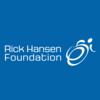Five Ways to Become a Stronger Ally to People in the 2SLGBTQ+ Community with a Disability
There is a meaningful intersection between people with disabilities who are members of the 2SLGBTQ+ community. Inclusion, access and diversity are pillars to creating a world for everyone, everywhere. As Pride month comes to an end, we put together a list of five ways everyone can work to become a stronger ally to people within this intersectionality, during Pride month and beyond!
Advocate for accessibility at Pride events
Accessible spaces benefit everyone. When attending/hosting events, ask yourself if the space (virtual or in-person) is accessible for all. For example, can someone with a physical disability attend your local pride parade? Is Alt text included for images in digital resources for people who are blind, partially sighted or use assistive technology? Is there an ASL interpreter at speaking events or shows? If these spaces are not accessible for all, advocate for inclusion.
Hosting an event? Go virtual!
Adding a virtual option to an event or choosing to be virtual over in-person allows for greater inclusion for everyone, including people with disabilities, people who live in remote communities, and people who are immunocompromised. Including a virtual option ensures no one misses out on events they want to attend and allows everyone to feel safe and comfortable doing so. If you want to help ensure your virtual event is accessible, check out these 10 tips for communicating virtually with someone who is hard of hearing, and these five ways you can make your PowerPoint presentations more accessible.
Use inclusive language
Using inclusive language is important when creating communities of acceptance. Every person identifies in a unique way and may prefer certain language that resonates with their individuality. Encourage the use of pronouns and use them! Be sure to follow the lead of people with disabilities in how they choose to describe or disclose their disability. Respect how each person chooses to be identified, and use the preferred language of that individual when describing and speaking with them. Language is always changing and evolving, and what may work for one person may not feel right for another. When in doubt, ask!
Find educational resources and show up prepared to learn
Try not to rely on people with lived experience in your personal network to be your main source of education. One individual does not speak for an entire community, and it can be draining for one person to be assigned such responsibility. Look for books, articles, organizations and educational tools to be your main source of information. Be open to being corrected without offence. It’s okay to make mistakes! Corrections are an opportunity to learn and become a stronger ally moving forward.
Create space
As we focus on creating more inclusive and diverse spaces, remember that meaningful inclusion entails representation and accessibility for all people, including people with disabilities, people in the 2SLGBTQ+ community and those within their intersection. When planning/attending Pride events, ask yourself if voices from various communities are included in the conversation. If not, look for meaningful ways to advocate for greater inclusion.
--
Read a first-person story on the importance of creating greater access at Pride events from Karli Drew, a queer disabled person who is a writer, creator, consultant and advocate.
As our list is in no way exhaustive, we encourage others to share their perspectives. We wish everyone a happy Pride month!







